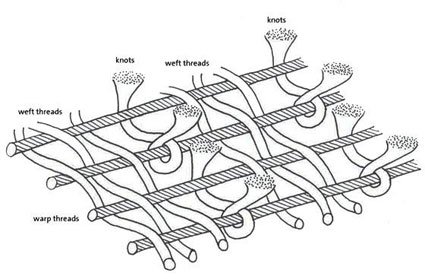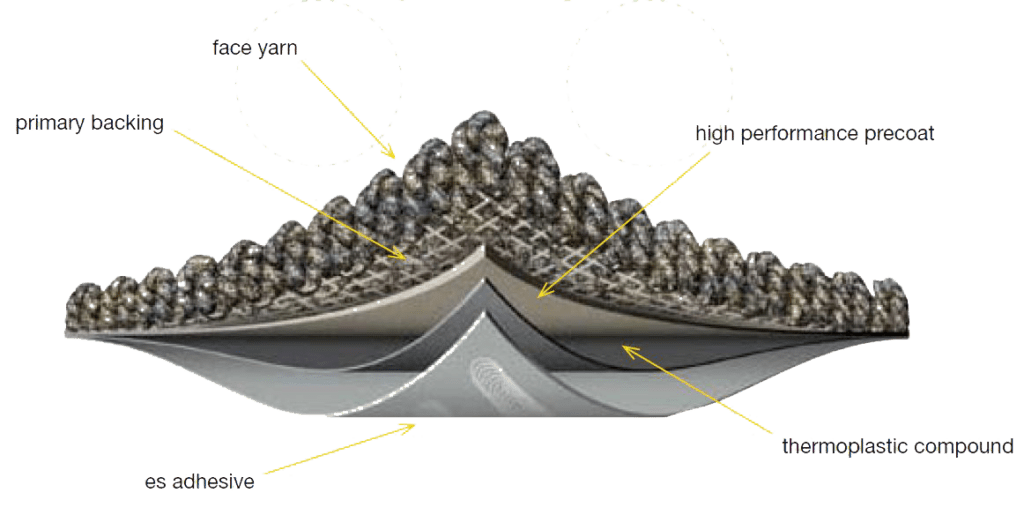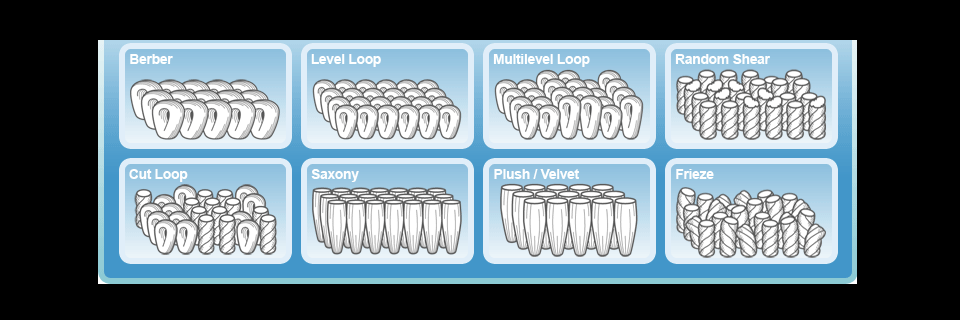Carpet, Technical Resources
Carpet Fiber Identification and Construction
Carpet Fiber Identification and Construction
Introduction
Carpet Fiber Identification is important to understand. The fiber and construction type you are dealing with is needed in order to prescribe the proper cleaning method and to avoid problems for you and your customer.
Fiber Identification
The most practical way of identifying fibers is to use these burn test procedures…
-
- 1st Step Acquire a fiber sample from an inconspicuous area.
- 2nd Step Place the fiber in some tweezers, a paper clip or a leatherman tool
- 3rd Step Using a butane lighter, burn the fiber (do over an ashtray)
- 4th Step Observe the smell of the burning fiber and the ash that is left behind.
Natural
-
-
-
- WOOL – smells like burning hair, leaves a crumbly ash
- COTTON – Smells like burning paper, leaves a grey fluffy ash
- JUTE – smells like burning paper, fiber is course and brown
-
-
Synthetic
-
-
-
- POLYESTER – Smells sweet, leaves a shiny black bead
- NYLON – Smells like celery, leaves a round hard bead
- OLEFIN – smells like asphalt, leaves a round hard bead
-
-
HINT– The easiest way to distinguish between nylon and olefin is to snip a fiber and put it in a glass of water. If it sinks, it is nylon and if it floats, it is olefin (be sure to pinch and rub the fiber between your thumb and finger in the water – this will break the surface tension in case the nylon fiber has been protected)
HINT – As a general rule, natural fibers will have a soft crumbly ash or no ash at all and synthetic fiber swill have a hard bead or crust.
Construction Types
1) Woven Carpet – Manufactured on a loom and is made up of the following components…

-
- WARP YARN – Usually made of cotton. Runs the length of the room
- WEFT YARN – Usually jute or polypropylene. Runs the width of the room
- FACE YARN – Traditionally wool, but can be made of any fiber. This creates the pile.
POSITIVES – Wears well and will not delaminate (separation of primary & secondary backing)
NEGATIVES – Expensive and hard to repair.
2) Tufted Carpet – Manufactured on a broadloom. Fiber sare tufted (sewn) into a primary backing material and the secured by attaching a secondary backing material. Tufted carpet is made of the following components….

-
- FACE YARN – mostly nylon, but could be any fiber. This creates the pile (the part you see)
- PRIMARY BACKING – Made of polypropylene. Fibers are tufted (sewn) into this material on the broadloom.
- LATEX GLUE – This is applied to the back of the primary backing to hold the tufts in place and to attach the secondary backing.
- SECONDARY BACKING – Made of polypropylene or jute. Secondary backing gives the tufted construction stability.
POSITIVES – Inexpensive, easy to install and allows a variety of different appearances (see pile designs)
NEGATIVES – Can delaminate (separation of primary and secondary backing) with wear and/or the over application of solvent based chemicals.
3) Fusion Bonded Carpet – Better known as “Carpet tiles” Fusion bonded carpet is made up of the following components….

-
- BACKING MATERIAL – Very dense and thick rubber material which gives the carpet its dimensional stability (ability to hold its size & shape)
- ADHESIVE – This is a thermoplastic adhesive that is applied to the secondary backing and then the fibers are imbedded into it before it dries. Once it has dried it cannot be dissolved by water or solvents.
- FACE YARN – Creates the pile. Usually nylon.
POSITIVES – Very stable construction and shorter pile height allows for easier soil release (cleans up nicely)
NEGATIVES – Can be quite expensive, can buckle in humid conditions and hard to match replacement tiles.
PILE DESIGNS
- SAXONY – Tightly twisted yarns that are about 3/4 inch tall. Stands up under heavy foot traffic.
- PLUSH / VELVET – Very little twist to face yarns creating a soft look and feel High temperatures and friction can distort fibers.
- FRIEZE – This design is composed of very tightly twisted yarns that give a rough, nubby appearance.
- LEVEL LOOP – All loops are the same height. Carpet with large untwisted loops is referred to as a ‘BERBER’
- MULTI-LEVEL – Loops are different heights creating a pattern to the carpet. Also known as ‘high-low’ or ‘sculptured’ carpet
- CUT & LOOP – Utilizing cut pile and loop pile together to create a wide range of patterns.




